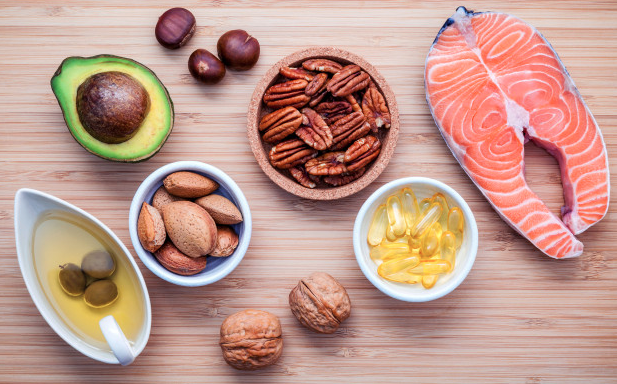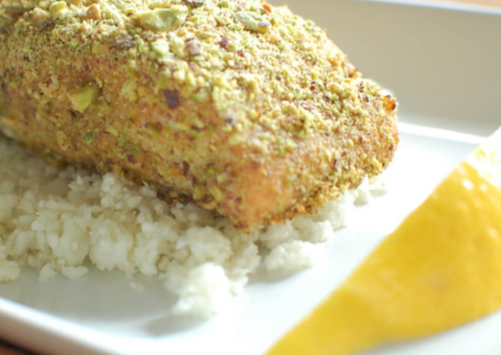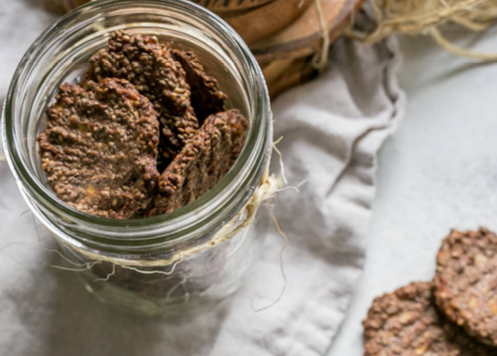
Monounsaturated Fats. Polyunsaturated Fats. Saturated Fats. Good Fats. Bad Fats. Omega 3 Fats. Omega 6 Fats. Omega 9 Fats. Trans Fats. Hydrogenated Fats.
Skim any shelf at the grocery store and you’re bombarded with fat labelling and claims that can be confusing and overwhelming and difficult for anyone to decipher. Even within the health community, we seem to have trouble agreeing on whether coconut oil is ‘good’ or ‘bad’. Or whether we should be using butter or if we’re better off with vegan ‘butter spread’ (?).
One day, the headlines are screaming we need to stay away from all fats, the next day, they’re telling us we need it for our metabolism or to feed our brains or lose weight.
What. Is. Up. With. That?
First off, let me just say our society has become very fat-phobic when it comes to choosing how to eat. Despite the growing popularity of the ketogenic diet (which I will further explain and cover off in a future blog), most folks who are trying to lose weight or improve their health have been brainwashed into believe that fat is bad. And if we eat it, we’ll get fat.
Simply not true.
(Make way for shameless plug!)
To help sort out the real story about dietary fat and it’s relationship to weight, I wrote an e-book that’s yours for the asking. Just email me if you are interested in getting the Facts about Fat: Why It’s So D#Mn Hard To Lose.
Self promotion aside, I mentioned in my last blog that February is Heart Month, so I wanted today’s to focus on another key factor that plays a role in heart health and that, of course, is fat.
You’ve probably heard about omega fats – and fish oils – being particularly good for heart health, so let’s backtrack for a moment here to answer the question, “What exactly are they?”
All about Omegas
Omegas are a group of fatty acids known as Omega-3, Omega-6, and Omega-9. They’re numerically named based on their chemical composition.
The body is capable of producing some fatty acids on its own, like Omega-9 – meaning you don’t need to get them from food.
But Omega-3 and Omega-6 fatty acids are essential fatty acids (EFA’s) and you can only get them through food -which makes them ‘essential for good health. Both omega-3 and omega-6 are important and needed by the body, but most diets contain an abundance of omega-6 and not enough omega-3.
The optimal ratio of 6’s to 3’s is 2:1. Sadly in the typical North American diet, it’s estimated that most people consume a ratio that is closer to 20:1.
The result? Inflammation!
Cardiovascular system on fire spells trouble
Putting it into perspective, inflammation can be useful. For example, if we catch a cold or become wounded, it’s the pro-inflammatory triggers which activate our white blood cells to help us recover from a cold and it’s the pro-inflammatory actions that signal blood clotting factors which help heal a wound. Unfortunately, being in an inflammatory state all the time can potentially contribute to scarier stuff, like heart attack and stroke.
Picture it this way: let’s say your arteries start out normal. If your body is constantly in an inflammatory state, then your body is receiving signals that there is something similar to a wound in there. So it produces a clot to try and ‘fix’ the issue. If the inflammation continues, your body will continue seeing this as an issue and add to the clot, which gets bigger and bigger. Eventually, it might cause a blockage in your bloodstream and cause a heart attack.
Omega-3 fats have shown to have anti-inflammatory properties, so it is believed that they help reduce the formation of blood clots, help to lower the amount of blood lipids in your bloodstream and (this is the really cool part) even help to regulate your heartbeat.
While historical research has heavily focused on using male participants (ummm hello – we women are 50% of the world!!), similar patterns of heart disease and fat consumption have been observed to occur in women (when the research has actually been focused on us). Women consuming more fish and more omega-3 fish oils seem to fair better than those who don’t – in terms of lowered rates of heart disease as well as lower mortality rates from these conditions.
And the health benefits of Omega-3’s don’t stop there! As a summary, the protective qualities of Omega-3’s include:
- Improved immune system function
- Decreased inflammation
- Decreased risk of heart disease, Alzheimer’s, cancer, arthritis, and depression
- Improved triglyceride and cholesterol values
- Critical role in human development – the brain and retina contain lots of omega-3 in the form of DHA
Best sources of Omega-3’s
Here’s where it gets a teeny bit complex – omega-3’s actually include several types of fats, including:
- ALA (alpha linolenic acid) – found in plants, like nuts and seeds
- DHA/EPA (docosahexaenoic acid/eicosapentaenoic acid) – found primarily in fish
Pro tip: Try my Pistachio-Crusted Salmon recipe below – it’s yummy and chock full of heart-supportive Omega-3s. You get ALA from the pistachios as well as the pine nuts. Salmon offers one of the highest levels of DHA and EPA, when compared to other food sources.
Looking for more sources of ALA? Flaxseed, chia seeds, and walnuts are your best options. A couple of tablespoons daily will boost your levels.
Canola and soybean oil are also good sources of ALA, but these oils aren’t healthy options since they quickly oxidize and turn rancid, which promotes inflammation and cancels out any beneficial effects of the Omega-3s they contain.
Ready for more complexities? ALA needs to be converted into EPA or DHA by the body for it to be utilized. This process is pretty inefficient, with estimates of just 1%-20% of the ALA we consume being converted into a usable form. Women do have a leg up on this though, as higher estrogen levels support the conversion enzymes needed for this process.
Although it would be hard to meet all your Omega-3 needs only with sources of ALA, flax, chia, and walnuts are still healthy fats with lots of other good-for-you vitamins, minerals, and antioxidants. So go ahead and try my tasty Banana Chia Crisps bonus recipe below and let me know how it goes!
Since fish contains the ready-to-use EPA/DHA form, it is recommended that most people obtain their Omega-3’s from fatty cold water fish, like salmon, tuna, herring, and sardines.
Cool fat fact: did you know fish don’t actually produce the Omega-3s they contain? Instead, algae makes EPA/DHA and fish accumulate the fat from the algae they eat.
If omega-3’s from fish are so good for us, shouldn’t we be eating fish every day?
Nope! Again more complexities (but I’m breaking it down for you all along the way, right?)
While there are no official recommendations for daily omega-3 intake, it’s thought most people can meet their basic omega-3 needs by consuming fish 2x/week.
To avoid taking in too much mercury, a toxic heavy metal sadly present in fish, alternate the types of fish you eat and limit varieties known to be high in mercury. Check out Health Canada’s recommendations for seafoods high in Omega-3’s and low in mercury here. They’re not always the best source for nutritional wellness (read my thoughts on Canada’s New Food Guide here), but in terms of seafood quality regulations, this is fairly reliable.
While meat and dairy aren’t good sources of omega-3 fats – and I recommend that you are also judicious with your intake of both – it’s worth noting that grass-fed meat and dairy contain higher amounts of omega-3’s than conventional grain-fed meat.
If you choose not to consume fish because of mercury or other concerns, it’s best to supplement with fish oil or, if you’re vegan – try algae oil. Fish and algae oils don’t contain mercury as a result of processing.
It’s generally considered safe to consume up to 3g – 6g of fish oil per day.
If you include a high quality fish oil supplement and a variety of sources of healthy fats in your diet, you don’t have to worry about counting omega-3’s.
Conclusion:
People who are managing symptoms of heart disease or other inflammatory health concerns may benefit from even higher, therapeutic doses of omega-3’s.
Please note, high doses of fish oil could interfere with blood clotting. If you’re currently taking blood thinners or have surgery scheduled, you should check with your nutritionist or healthcare team before supplementing.
References:
Healthline – Omega 3 Fatty Acids: The Ultimate Beginner’s Guide
National Institutes of Health – Omega 3 Fatty Acids
Precision Nutrition – All About Fish Oil
Precision Nutrition – All About Healthy Fats
Recipe: Pistachio Crusted Salmon
Serves: 4
Ingredients:
- 1/2 cup Pistachios (removed from shell)
- 1/4 tsp Sea Salt
- 1 1/4 lbs Salmon Fillet
- 1/4 cup Pine Nuts
- 1 Garlic (clove, minced)
- 2 cups Parsley (chopped)
- 1/4 cup Extra Virgin Olive Oil
- 1 Lemon (juiced)
- 1 head Cauliflower (chopped into florets)
Directions:
- Preheat oven to 375ºF (191ºC). Line a baking sheet with parchment paper.
- Place pistachios and sea salt in a blender and pulse just until coarse but not into a fine powder. (Do not over process!)
- Lay fillets on the baking sheet and coat with the pistachio mixture. Place in the oven and bake for 15 minutes or until fish flakes with fork.
- Meanwhile, create your pesto by combining the pine nuts, garlic, parsley, olive oil and lemon juice in the food processor. Blend until smooth and transfer to a jar.
- Create your cauliflower rice by adding the florets to the food processor. Process until the cauliflower has a rice-like consistency. Transfer into a bowl.
- Remove the salmon from the oven. To serve, add a few spoonfuls of cauliflower rice to the plate and top with salmon. Add a spoonful of pesto and garnish with a lemon wedge. Enjoy!
Recipe: Banana Chia Crisps
Serves: 1
Ingredients:
- 1 Banana (medium, ripe)
- 1/4 cup Chia Seeds
- 1 tsp Cinnamon
Directions:
- Preheat oven to 350ºF (177ºC) and line a baking sheet with parchment paper.
- In a small bowl, mash banana with the back of a fork. Mix in chia and cinnamon until combined.
- Transfer small dollops to the baking sheet. Press down gently using your fingers or the back of the fork. Bake for 20 to 25 minutes.
- Remove from oven. Let cool and enjoy!
